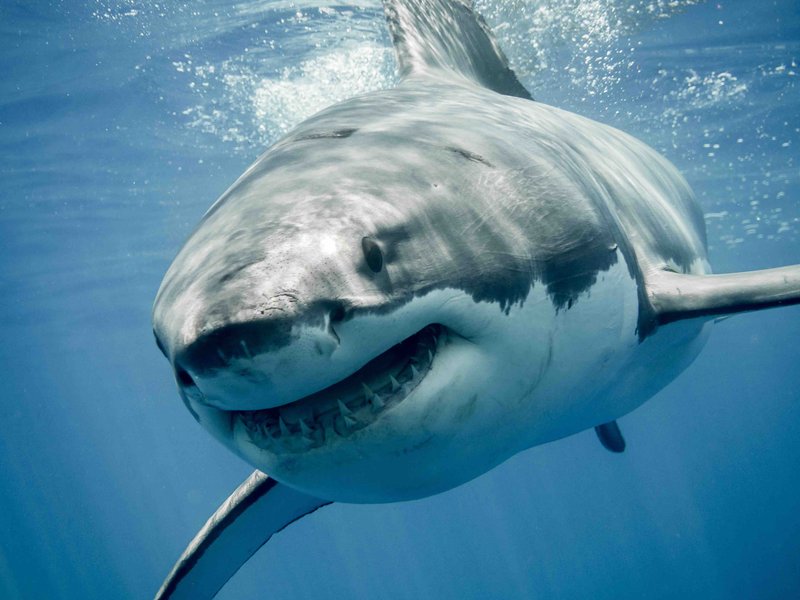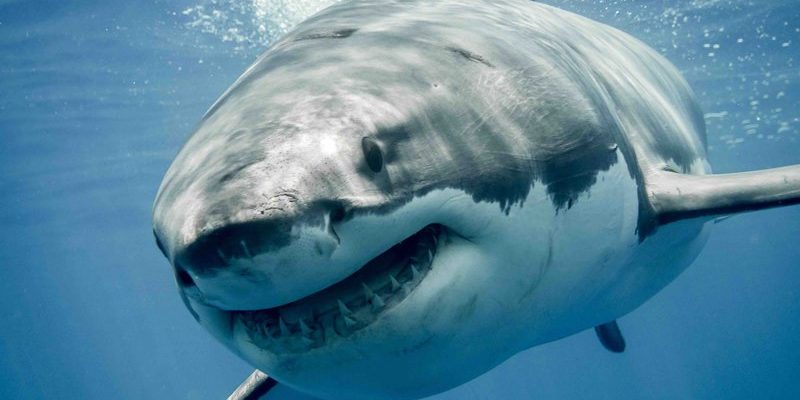
Imagine a Great White shark as a lone wolf cruising the open seas, observing its environment before embarking on the most significant journey of its life: breeding. Understanding how these majestic animals reproduce helps us grasp their role in the ocean ecosystem and also highlights the challenges they face in a world that often threatens their survival. So, let’s break it down together, sip our metaphorical coffee, and explore the intriguing breeding habits of the Great White shark.
Understanding Great White Shark Reproduction
Great White sharks are known for their unique reproductive approach, which is quite different from what we see in other animals. They are ovoviviparous, meaning their young develop inside eggs that hatch within the mother’s body. This method is a bit like having a surprise gift that’s fully formed and ready to go when it’s finally revealed. When the pups are ready to be born, the mother gives birth to live young, ensuring they have a better chance of survival in a world where they can easily fall prey to larger predators.
You might be wondering how long it takes for these little Great Whites to develop. Generally, the gestation period lasts about 11 months, though some estimates suggest it could be as long as 18 months. However, the exact duration is still a bit of a mystery since these sharks are elusive and live mainly in deep waters. During this time, the developing pups feed on their siblings, a process that seems harsh but is actually quite common in the animal kingdom.
One eye-opening fact is that a female Great White can give birth to anywhere from 2 to 14 pups at once. That’s quite a variety! In some cases, larger females may have the capability to produce more pups, but it’s not a guarantee. This variability underscores the importance of each individual shark in maintaining healthy populations.
The Mating Rituals of Great White Sharks
Let’s shift our focus to the courtship dance of Great White sharks. When it’s time to mate, males become quite determined, using their keen sense of smell and their incredible ability to detect pheromones to locate females. You can picture it as an underwater game of hide and seek, where the stakes are high for the future generation of sharks.
Once a male finds a female, he approaches cautiously. The courtship process can be aggressive, and you might even witness some wrestling-like behavior. Males will often bite the female’s fins and body, which sounds brutal, but it’s their way of securing a partner. This behavior is also thought to stimulate the female’s reproductive readiness, making it easier for them to mate successfully.
Interestingly, females can store sperm for an extended period after mating. This means they can decide when to use it, allowing for more strategic breeding. It’s almost like having a backup battery ready to go when the time is right. This ability can be crucial for survival in the wild, where conditions can change rapidly.
How Do Great White Sharks Choose Their Mates?
Choosing a mate is not a straightforward affair for Great Whites. It’s a mix of instinct and survival of the fittest. Females generally prefer larger males, which likely signals better genes and stronger offspring. This preference can be thought of as nature’s way of ensuring that the best traits are passed down to the next generation.
Males, on the other hand, compete among themselves for the opportunity to mate with females. This competition can include displays of strength and agility, much like any other animal kingdom rivalry. The male that demonstrates the most prowess often gets the chance to mate—a classic case of “show what you’ve got!”
But it’s not just about size and strength. Great Whites also have complex social hierarchies and behaviors that influence mating. By studying these aspects, researchers can better understand how environmental factors might impact Great White populations and their reproductive success.
The Journey of Great White Shark Pups
Once the pups are born, they face a challenging journey right from the start. At birth, they are about 4 to 5 feet long and ready to fend for themselves. There’s no parental guidance in the world of sharks! As soon as they’re born, they have to swim away from the birthing site to avoid potential threats, including adult sharks, which can sometimes see them as a snack.
The pups generally head towards coastal nurseries, where they can find shelter in shallow waters. These areas often provide plenty of food and some protection from larger predators. It’s like finding a safe haven in a bustling city—essential for growing up strong and healthy.
As they grow, Great White pups rely on a diet of small fish and invertebrates. It’s a tough world out there, and they need to be quick and smart to snatch their meals and avoid becoming a meal themselves. Luckily, Great Whites are equipped with incredible hunting tools, like sharp teeth and a streamlined body, making them efficient hunters even from a young age.
Challenges to Great White Shark Reproduction
Breeding and reproduction are crucial for the survival of Great White sharks, but they face many challenges today. Overfishing, habitat loss, and ocean pollution are just a few threats that can impact their populations. These factors can disrupt not only mating but also the overall health of shark populations, which can have ripple effects throughout the ocean ecosystem.
One significant issue is the decline in their food sources due to overfishing. If prey like seals and smaller fish become scarce, it can directly impact the sharks’ ability to reproduce and raise their young. Imagine trying to grow a garden without water; it just won’t thrive.
Additionally, climate change poses a huge threat to their habitats. Warmer ocean waters can alter migration patterns and breeding grounds, making it harder for Great Whites to find suitable environments for reproduction. This change can lead to lower pup survival rates, which is concerning for the future of these majestic creatures.
Conservation Efforts for Great White Sharks
With the challenges facing Great Whites, many organizations and scientists are stepping up to help protect them. Conservation efforts often focus on creating marine protected areas where these sharks can breed safely without human interference. You might think of it as setting up a “safe zone” for a species that needs to thrive.
Public awareness campaigns also play a vital role in the conservation of Great Whites. Educating people about their importance in the ocean ecosystem can foster greater respect and understanding. Plus, it can help fight against the negative stereotypes that often surround sharks. After all, they’re not just mindless killers; they’re fascinating creatures with complex lives.
Researchers are also studying their behaviors and reproduction patterns to help create effective conservation strategies. By understanding the intricacies of Great White reproduction, we can better protect them and ensure they continue to swim our oceans for generations to come.
The Future of Great White Shark Populations
As we wrap things up, the future for Great White sharks is uncertain, but there is hope. By continuing to support conservation efforts, we can help ensure these magnificent creatures have the chance to reproduce and thrive. Every effort counts, whether it’s supporting marine sanctuaries, reducing plastic use, or simply educating ourselves and others about the ocean’s wonders.
The breeding and reproduction of Great White sharks are not just fascinating biological processes; they are crucial for the health of our oceans. Appreciating these elements can lead to a deeper understanding of why we need to protect not just Great Whites but the entire marine ecosystem.
So, next time you come across a story or documentary about Great Whites, remember the incredible journey they embark on to bring new life into the world. Their survival depends on our actions, and together, we can make a difference.

